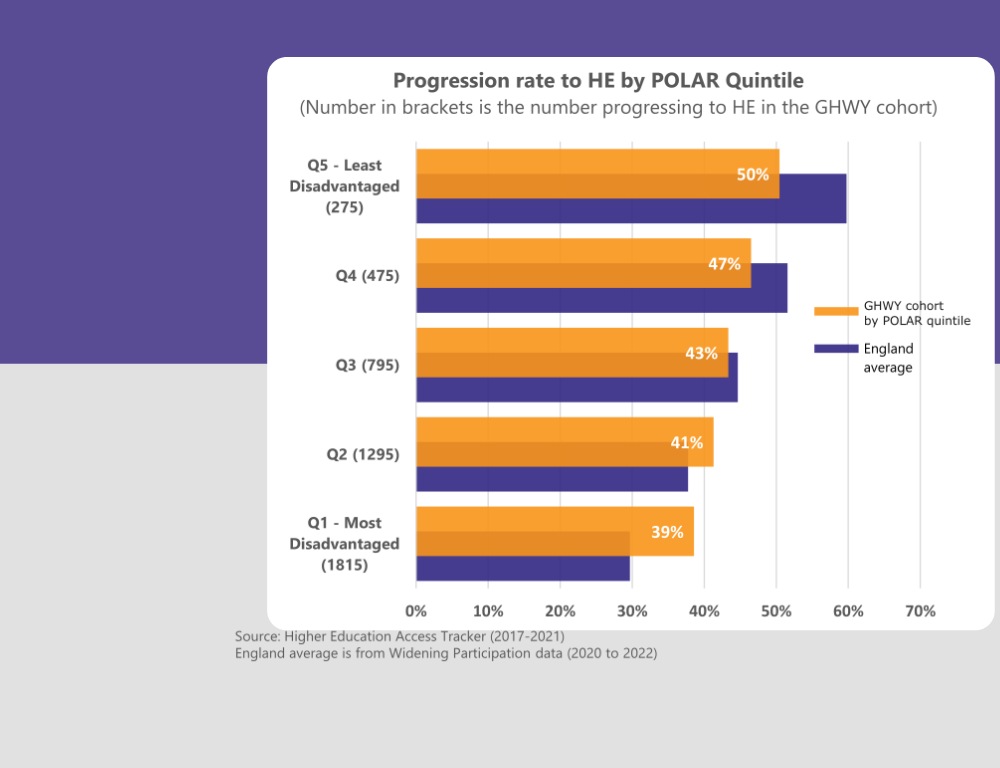Progression to HE Data Insights
Higher Progression Rates for GHWY Cohort
- GHWY participants had higher rates of progression to higher education (HE) compared to the national and regional averages.
- In 2018-2020, GHWY progression rates were significantly higher than all control groups, including a weighted national average and non-participants recorded on HEAT.
Significant impact on POLAR Quintile 1 Learners
- GHWY activities had a particularly strong effect on learners from areas with historically low HE participation (POLAR Quintile 1), tripling their likelihood of progressing to HE.
Activity type influences progression rates
- Activities like HE subject insight, summer schools, and non-student activities had the highest progression rates.
- Skills & attainment and mentoring activities showed lower progression rates.
Participation Intensity Boosts Progression
- Students participating in multiple GHWY outreach activities showed a higher likelihood of progressing to HE.
- Each additional activity increased the probability of progression by about 20%.





